When the summer weather sets in and the days grow longer, relaxing with a cold beverage is practically mandatory. Some people prefer to quench their thirst with beer, while others can think of nothing more satisfying than iced tea. Of course, nothing feels quite as celebratory and summery as a good cocktail.
Whether you’re lounging on the beach during a vacation or grabbing a quick moment of relaxation after work, a good cocktail can instantly put you into out-of-office mode. While there’s no strict definition of a summer cocktail, it’s fair to say that the unifying factor is that they are all refreshing.
Generally containing bright flavors and often including citrus or summer fruits, as well, summer cocktails should cool you down without feeling overly heavy. In other words, while an espresso martini might be the ideal option for colder months — when that velvety coffee liqueur hits the spot — the summer is for spritzes, sours, and smashes. Without further ado, here are some of the best and worst summer cocktail options offered during the season. We’re only covering alcoholic beverages here, but check out our beginner’s guide to crafting the tastiest mocktails at home if you prefer.
Love: Clover Club

Anna C Horne/Shutterstock
If you like fruit-forward cocktails but can’t stand the type that’s overwhelmed by sugar, the Clover Club might hit the spot. Created in Philadelphia in the 1890s or early 1900s, it combines gin, fresh lemon juice, raspberry syrup, and an egg white, creating a tart, frothy cocktail that packs a punch. Some recipes also include vermouth and lime to double down on the intensity of flavor. Regardless, it invites slow sipping during the warmer months.
Featuring a combination of sharpness and a velvety texture from the egg white, it isn’t served over ice, but has all the bright freshness of the best summer drinks. Although it was invented over a century ago, the Clover Club has enjoyed a revival in recent decades — especially after mixologist and author Julie Reiner named a Brooklyn bar after it in 2008. Generally served in a coupe glass and featuring a layer of white foam from the egg white, it oozes sophistication and is tough to beat for a fancy meal or night out.
Retire: Aperol spritz
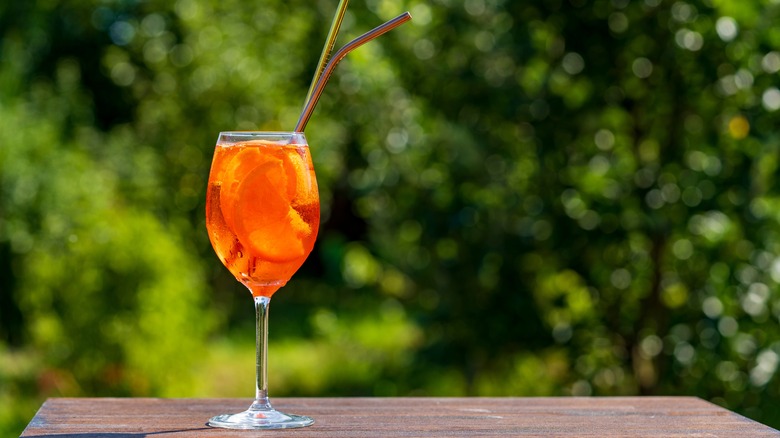
OlegD/Shutterstock
An aperol spritz comes with Aperol (which is a neon orange Italian aperitivo known for its bitterness and intense sweetness), prosecco, and club soda, with an orange slice often included to complete the picture, as well. Now, to call this cocktail popular would be an understatement. It’s a summer staple, as well as a symbol of European vacations, and a Pinterest board in a single image. In other words, it’s a vibe — in the same way frosé was a vibe for a brief moment back in the 2010s.
There has been a surprisingly heated debate over whether the aperol spritz is a good drink, and it often ends in accusations of elitism (taste is subjective, after all). No one should be judged for ordering this drink since it’s inherently refreshing, but it’s also a bit of a blunt instrument. It’s a mixture of a sickly-sweet liqueur and sparkling wine that’s often of poor quality (which is a bar or restaurant’s fault, not the customer’s). Frankly, there are other spritzes out there that have a more complex flavor profile and are just as refreshing.
Love: Hugo spritz
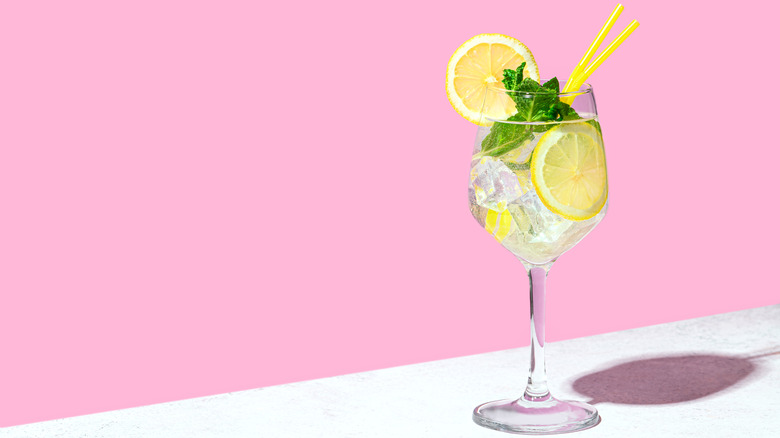
Mizina/Getty Images
When it comes to light, fizzy, and refreshing, it’s hard to beat the hugo spritz. If you’re after something to cool the summer heat and make you feel like you’re surveying a breathtaking Alpen view, you might discover that the hugo fits the bill. Made with fresh mint, elderflower liqueur, prosecco, and soda water, it’s chic, breezy, and light enough on the ABV for anyone who isn’t interested in getting tipsy after a few sips.
Invented in 2005 by Roland Gruber at his bar in South Tyrol, Italy, the original hugo spritz recipe contained lemon balm syrup before elderflower took its place. When the French elderflower liqueur St-Germain was created in 2007, it slotted right in — as if it had been made specifically for that purpose – and adding another layer of alcohol. Whether you’re sitting by the pool on a sweltering summer day or dreaming of a vacation, this drink will transport your tastebuds and quench your thirst.
Retire: Long Island iced tea
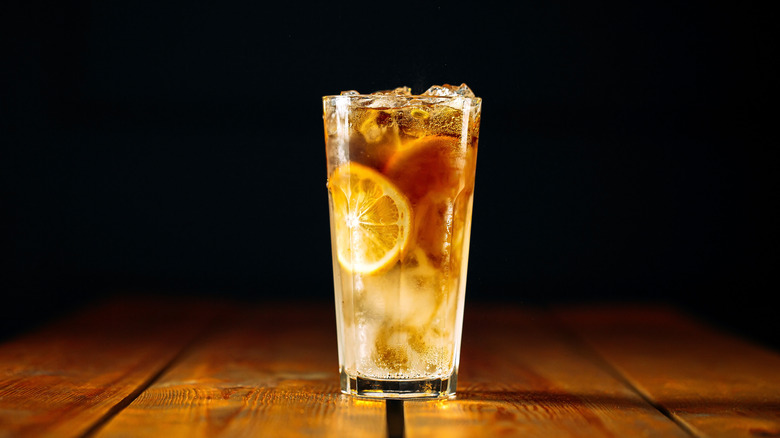
Maxim Sparish/Getty Images
A Long Island iced tea order will send a chill down the spine of even the most stoic bartender. It isn’t that it’s hard to make — it’s that the people who drink it have a dire reputation. The drink reached its peak in popularity in the 1980s and has been associated with rowdy patrons ever since.
This cocktail calls for vodka, tequila, rum, triple sec, gin, simple syrup, and cola with some ice and a lemon slice. Combined, you have a drink that looks like iced tea, yet often tastes like sweetened hand sanitizer. Long Island iced tea contains not one but four different types of liquor, after all, resulting in a drink so powerful that you’ll be drunk before you can do an inventory of the ingredients.
Even if you sip it slowly, you’re unlikely to be able to appreciate its components. It’s franky a waste of its ingredients, which is probably why bartenders often use low-quality spirits to make it.
Love: Pisco sour

Daniel Viero/Getty Images
Sours are a category of cocktails that combine a spirit with something sour (naturally) and some type of sugar. They’ve been around for centuries, with the whiskey sour emerging as early as 1870. The pisco sour was created sometime around the 1920s in Lima, Peru, though Chile has long laid claim to the drink, as well. The minimalist recipe calls for pisco, lime juice, sugar, egg white, and a dash of bitters.
Despite its bare bones ingredients, the drink can vary considerably due to the pisco, an unaged brandy made with fermented Peruvian grapes that can range in flavor from earthy notes to light, floral ones. The egg white creates a silky texture and counteracts the tartness of the lime juice, while the bitters offer an initial hit of complex aromas and create more depth of flavor. You can drink pisco sours at any time of the year, but their bright citrusy taste offers all the refreshment you could wish for on a hot summer day.
Retire: Mai tai
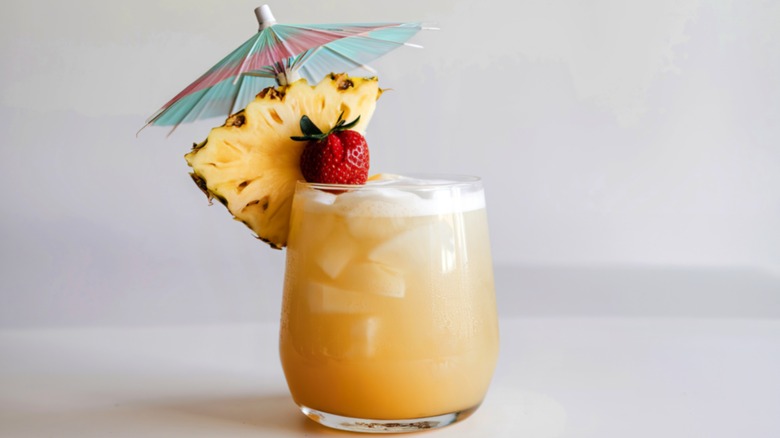
lexandrumoldovanu/Shutterstock
What is a mai tai? It’s a bit of a trick question. Two rival restaurateurs claimed to have invented the recipe in the 1930s or ’40s, and it’s been a source of argument ever since. One of the most common elements of this cocktail is a paper umbrella, which gives you an idea of how poorly established its actual ingredients are. You might end up with nothing more than a combination of juices and rum, something sickly sweet made with cherry liqueur, or something stereotypically tropical that is dominated by pineapple juice.
The original recipe was much simpler and more nuanced: rum, fresh lime juice, orgeat (a syrup made from almonds and either orange blossom or rose water), and orange curaçao. It’s sweet but balanced, and it tastes citrusy without tasting like a lightly spiked fruit juice. While classic mai tais are delicious, there’s no guarantee you’ll be getting one when you place your order. You’re better off just making your own mai tai rather than taking a risk, or simply retiring this summer cocktail entirely.
Love: Margarita
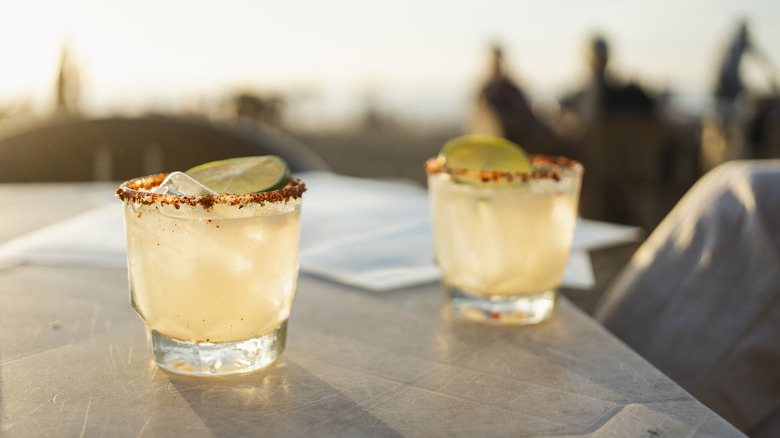
Linda Raymond/Getty Images
Is there a drink as flawless as the margarita? Some might argue that the old fashioned edges it out in terms of pure mixological precision and alchemy, but if you like the peppery, bright flavor of tequila, there is nothing exceeds it.
The original recipe calls for only three ingredients: tequila, triple sec, and fresh limes. That’s it. It took several names before being called a margarita (including the tequila daisy, the picador, and the tequila sour), and early recipes called for lemon or lime. Of course, if a bartender were to offer you a margarita made with lemons today, you’d be well within your rights to storm straight out of there with a refund.
Citrusy, boozy, and impeccably balanced, a margarita made in its classic ratio with only three ingredients is a knockout of a cocktail that lets the tequila show its full colors. Its simplicity is deceptive, of course, so if you’re making one at home, make sure to read our essential tips for crafting the perfect margarita to make sure you’re getting the most out of the recipe.
Retire: Frozen margarita
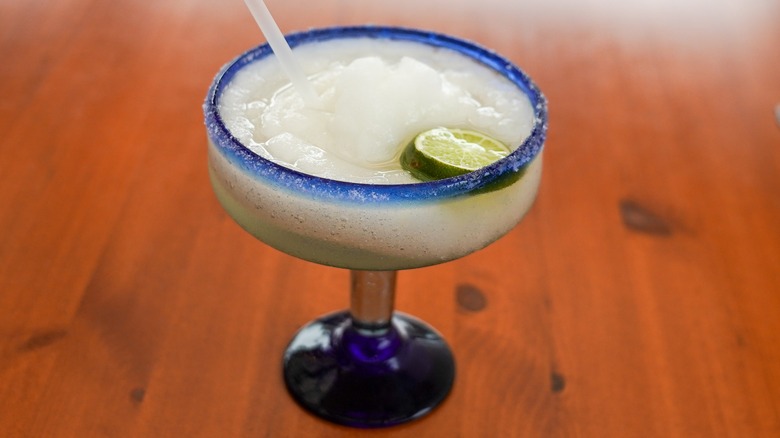
Leonard Zhukovsky/Shutterstock
Margaritas are as close to faultless as a cocktail can get. There is no improving on them. The frozen margarita, on the other hand, leaves much to be desired. You may wonder how the two could be so different, but for starters, you’re taking a gamble every time you order one. Some frozen margaritas are simply margaritas served over crushed ice, a recipe that yields pretty much the same drink as a margarita served over regular ice. More than that, though, frozen margaritas often contain excessive amounts of sugar, making them taste like a completely different drink.
The fact that they’re frozen also robs you of the exquisite balance of flavors in a classic margarita. Freezing ingredients tends to mute their flavor, so don’t expect to be reveling in a bright zing of lime or the nuances of a good tequila. If you’re hankering after one, it’s best to just make a frozen margarita at home. This way, you can do it from scratch and avoid any undesirable mixers, while adjusting the ratios to suit your tastes.
Love: Bee’s knees

Rimma Bondarenko/Shutterstock
As its retro name suggests, the bee’s knees is a Prohibition-era cocktail. Made with gin, honey, and lemon juice, it’s simple, yet packs a powerful punch, with the honey adding a novel twist to the gin sour. Legend has it that the distinctive taste of honey was used to mask the flavor of bathtub gin, the homemade spirit to which Americans resorted during Prohibition. However, the recipe is actually attributed to French bartender Frank Meier, who was working at the Hôtel Ritz Paris in the 1920s.
It is possible that by the time the cocktail reached the shores of North America, the honey was indeed used as a convenient distraction from low-quality gin. This might explain why the recipe eventually became overpoweringly sweet. The true ratio should make the gin more dominant and the honey subordinate to the lemon. Some recipes include orange juice, but if you prefer your drinks to be crisp and to the point, skip that additional component.
Love: Gin rickey

Brent Hofacker/Shutterstock
Every so often, it’s worth thinking about the people who had to suffer through sweltering summers without air conditioning in the past. In Washington, D.C., that heat could be particularly punishing. It was so bad that in the 1800s, in fact, that diplomats received hardship pay just for enduring it. If you were a congressman at the time — sweating through your thick suit after a long day passing legislation in a barely ventilated room — one sip of a classic gin rickey might have convinced you that you had died and gone to heaven.
Made of gin, lime, club soda, and simple syrup, this tall cocktail was the product of two men: Democratic lobbyist Colonel Joseph Kyle Rickey, and bartender George A. Williamson. Williamson created the drink at Shoemaker’s Bar in 1980 after seeing the Colonel squeeze a fresh lime into his whiskey and top it off with soda water. It became its own category of drink, and although whiskey was the original spirit, gin provides another layer of bright zestiness to beat the summer heat. Like a gin and tonic but without the bitterness of the tonic’s quinine, it was refreshing enough for pre-air-conditioned D.C., which is about as high a compliment as a summer cocktail can get.
Retire: Sex on the beach
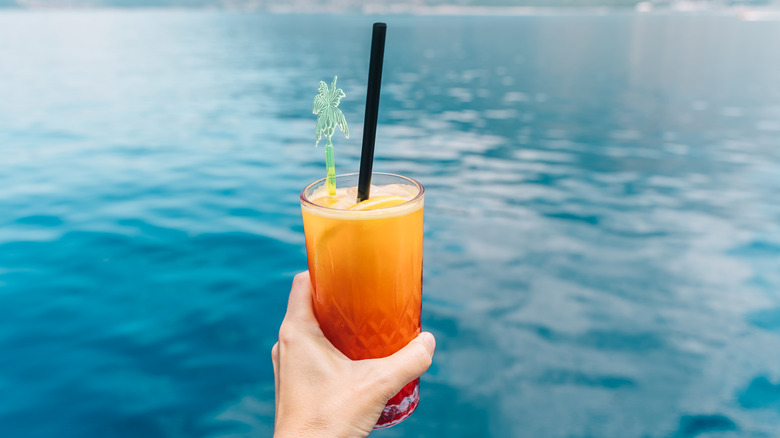
Tatiana Maksimova/Getty Images
Sex on the beach is one of those drinks that’s difficult to order with a straight face, but the name is pure marketing. There’s no salacious origin story about a sweaty encounter in the sand. Some have suggested that the name comes from the drink’s appearance, with the red (as in “red light district”) layer sitting atop the orange, beachy layer. Regardless of its precise origin story, this cocktail is a sugary mess of fruit flavors that struggles to justify its popularity.
Consider its ingredients: Vodka, peach schnapps, orange juice, and cranberry juice. Only one of those ingredients (vodka) isn’t sweet, and depending on the type of cranberry juice you’re using, there might not be much tartness to temper the sweetness except the vanishingly faint burn of alcohol. It’s a strangely unbalanced drink. All that sugar makes it cloying, far removed from the bright, refreshing flavor that makes the best summer cocktails sing.
Love: Bahama mama

Brent Hofacker/Shutterstock
If you like the idea of sex on the beaches and tequila sunrises, the Bahama mama might just be the drink you’ve been looking for all your (drinking age) life. It’s had a strange trajectory, beginning as a so-so drink, devolving into a sickly sweet fruit punch, and finally rising like a phoenix to be sweet, tropical, and rum-forward.
Created at the Nassau Beach Hotel in 1961, the original version contained rum, coffee liqueur, lemon, and pineapple juice. By the time it hit menus at Applebee’s and TGI Friday’s, the caffeine had been dropped and coconut liqueur, banana liqueur, orange juice, and grenadine had been added to make a concoction even more confusing and saccharine than a sex on the beach.
These days, however, you’ll find Bahama mamas that are closer to that original formula but less sweet and with a greater focus on the combination of rums. Overproof rum is often used for an extra kick, along with a more flavorful option, like coconut or dark rum.
Retire: Tequila sunrise

Elena Veselova/Shutterstock
Like the sex on the beach, the tequila sunrise has become synonymous with sun-soaked, beachy vacations. It even looks like a golden water color sunrise in paradise. It rocketed to popularity in the 1970s, when the Rolling Stones professed their love for it, and The Eagles named one of their songs after it. It’s been a summer cocktail staple ever since, for better or for worse (we think worse).
Sometimes, simplicity equals excellence. Manhattans, martinis, and kir royales have three ingredients or fewer and are some of the most revered and balanced mixological creations of all time. However, the tequila sunrise — which is made of grenadine, orange juice, and tequila — is nowhere near that category. It is thrown off balance through the overpoweringly sweet first two ingredients, leaving the spirit fighting a losing battle. Good tequila is full of complex flavors that have absolutely no chance of registering on your taste buds when drowned in all that sugar.
Love: Mojito
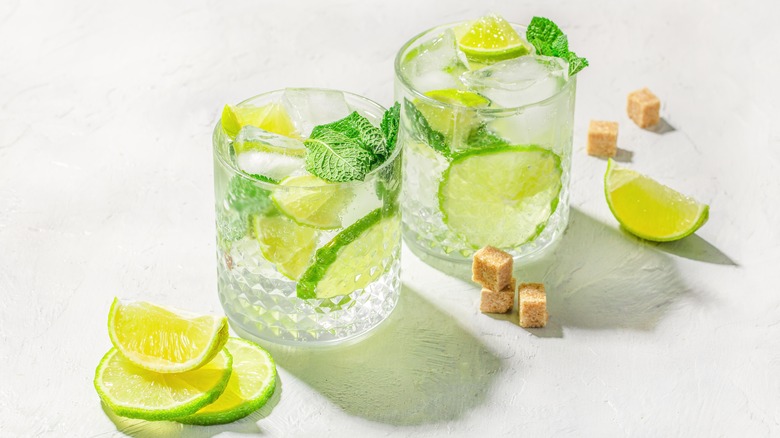
sweet marshmallow/Shutterstock
The mojito is a crowd-pleaser. Now, if you think that sounds like faint praise, let’s expound upon its virtues. It is, quite simply, one of the most refreshing cocktails ever created thanks to its combination of fresh mint, effervescent soda water, rum, zesty lime juice, and sugar. It’s hard to imagine another combination without cucumber or watermelon that could reach these heights of thirst-quenching freshness (though feel free to double down with our watermelon mojito recipe).
When people talk about old cocktails, they often point to ones that emerged before Prohibition, but the mojito trounces the competition here, too. Some accounts date it all the way back to Cuba in the 16th century. The fact that we’re still guzzling them down more than 400 years later is a testament to just how appealing this cocktail is. Sometimes, the word “mainstream” has negative connotations, but in the case of the mojito, it’s the highest possible praise.
Love: Cosmopolitan
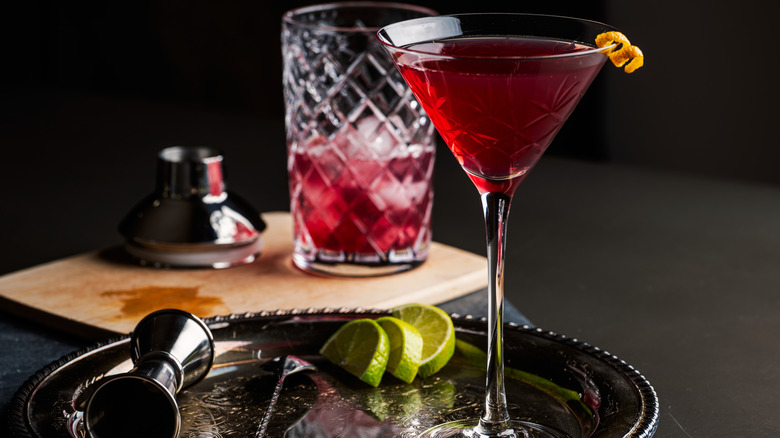
Markhatfield/Getty Images
If you like cranberry juice but don’t enjoy having your tastebuds coated in the cloying sweetness of a sex on the beach, the cosmopolitan has a lot to offer. It might not have any of the beachy connotations (far from it, it’s often associated with luxurious city living), but its powerful tartness and light sweetness have summer written all over them. Vodka, Cointreau, lime juice, and cranberry are all it requires. No frills or redundancies; just liquor, citrus, and cranberry, or three elements that fantastically complement each other.
Cosmos became popular in the 1990s, thanks to their regular appearance on the HBO show “Sex and the City,” and because everyone seems to be obsessed with the ’90s these days, they are back in style. Then again, the origins of this classic cocktail are pretty murky.
Their resemblance to the kamikaze cocktail (which has all the same ingredients except the cranberry juice), is undeniable, but it wasn’t until the 1970s that the blush of pink was added, first with grenadine and then with cranberry. Like the Clover Club, a cosmopolitan has the sophistication of a ritzy cocktail bar and the refreshing flavor to suit a hot summer afternoon.
Love: Whiskey smash

Brent Hofacker/Shutterstock
Like sours, smashes are a cocktail category tailormade for summer. Similar to a mint julep, they involve muddling liquor and a sweetener with fresh herbs or fruit, shaking it with ice, and straining it into a glass. There are countless variations and plenty of room for interpretation, but one that simply cannot be improved upon is the whiskey smash, a concoction of whiskey, lemon juice, sugar, and mint.
Smashes were wildly popular in the mid-19th century, especially during the summer. While brandy smashes were a favorite, the whiskey smash was also a hit. The original recipe didn’t include lemon juice. In fact, the drink floundered in obscurity for over a hundred years before Dale DeGroff, a bartender in New York, decided to liven up the mint with some citrus sometime in the 1990s. A flawless summer drink was born, and it’s been gracing cocktail menus ever since.

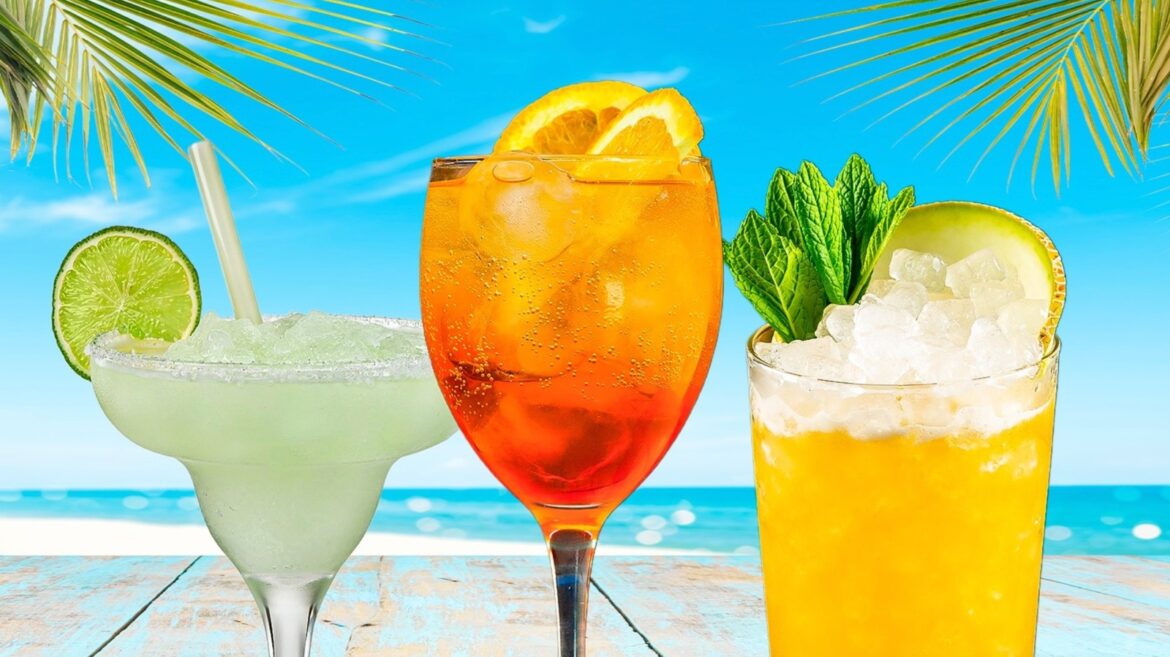
Dining and Cooking